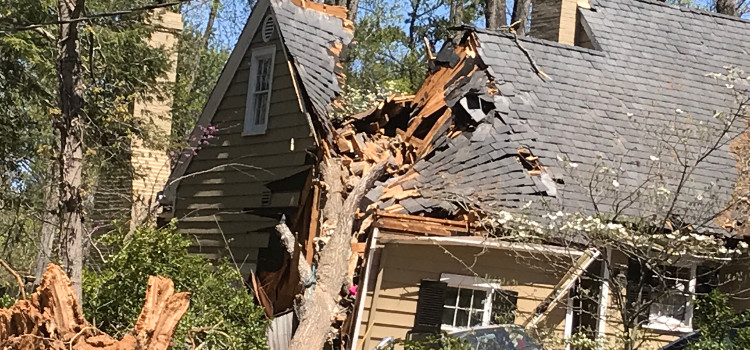The question of whether or not metal roofs are better at deflecting hurricanes than other materials has been brought up in the media after Hurricane Harvey.
Are metal roofs better for hurricanes?
Yes. Metal roofs are a much more reliable option when it comes to protecting a home in the case of a hurricane. They withstand high winds and heavy rains in a way that other building materials cannot. In fact, studies have been done that show metal roofs actually deflect wind from the homes they cover, preventing costly damage from occurring.
Contents
How Much Wind Can A Metal Roof Withstand?
Metal roofs can withstand winds up to 140 mph. However, they will not protect the structure underneath from flooding or falling trees. In a situation where a metal roof does not fail, the building underneath it will likely still be damaged. However, if storm damage were to occur to a metal roof, then the building underneath will likely be fine.
A study performed by the National Institute for Buildings found that many homes in Texas experienced as much as 27% more wind damage during Hurricane Harvey’s aftermath than those with normal roofs. In comparison, only 15% more damage occurred to those with concrete roofs.
How Much Water Can A Metal Roof Withstand?
Metal roofs are also effective at keeping water off of the structure below. The roofing material has an extremely high rainfall-to-energy ratio, meaning that less than 1% of rain that hits it will leak through to the structure below.
Metal roofs are more expensive than most other roofing materials. However, they last 20-30 years longer than most other roofing materials. The cost is well worth it for their durability and long term benefits.
Best Metal Roofing For High Wind Areas
There are many factors to consider when picking the best roofing material. Many of these factors, which include cost, type of installation, maintenance and service life can be influenced by the area where you live. For instance, hurricane zones such as Florida and New Orleans receive more than their fair share of hurricane damage as a result of their low elevation and vulnerability to strong winds that cause strong wind damage. Primarily because of the low elevation, the material used for roofing does not need to be as strong in these areas, since these homes are not right in the path of strong winds.
Irrespective of where you live, there are several different types of metal roofs that can withstand abrasive conditions following hurricanes. The most common types of metal roofs include tile, shingles and metal shingles. Tile roofs are normally made of ceramic tiles combined with products like cement to provide an appealing finish on the roof.
Metal shingles are similar to standard shingles or slate. They are more durable than the other types of metal roofing, and offer a more unique appearance than tile roofs. Metal shingle roofs come in many different styles including tiles, tiles with ridges, tiles with ridges and valleys, diamond or square edged metal shingles, roll shingles and shingled strips. They work well for steep roofs because the material is strong enough to handle heavy debris without cracking.
Shingles offered by metal roofing companies in hurricane zones may also be made of aluminum. Many metal shingles also come with a rain gutter system to prevent water from leaking through and causing rot and mold.
Stainless steel or silver roofs can also withstand extremely high winds and heavy rainfall, and prove to be highly durable. The material is easy to maintain and does not need to be replaced as often as other roofing materials.
Typical Metal Roof Wind Damage That Can Happen
Even if the home’s roof is made of metal, it is not as sturdy as a protective storm shelter. Hurricanes and tornadoes can cause damage to the roof by tearing the roofing off, or blowing it away. The structure underneath can also be severely damaged by falling trees and debris, strong winds and flooding.
Metal roofs are known to last longer than other types of sheets of building materials, especially if they are also a flat roof, with some metal roofing coming in at an average service life of over 30 years. This means that the roof may require less maintenance, since it lasts longer. Roofing companies in hurricane zones recommend regular inspection, especially if there is severe wear and tear on the material. For instance, if your home has had multiple repairs or refurbishments to the roof in recent months or years, the roof damage repair work may need to be done again.
Conclusion
Metal roofs are likely the best option for homes located in hurricane season prone areas. They can withstand extremely high levels of wind and heavy rainfall, and require less repair work than other roofing materials. They also offer a unique aesthetic appeal that is not offered by any other type of roofing material.

